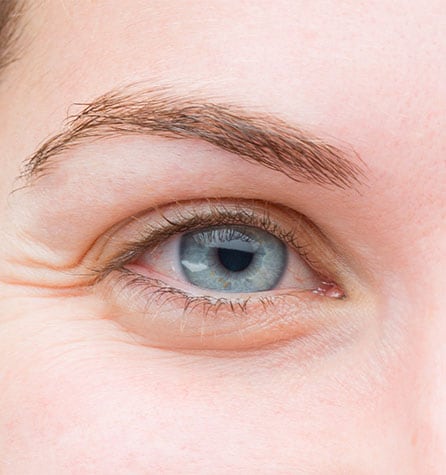Neurologist Andalusia: Expert Neurological and Eye Treatment Services
Neurologist Andalusia: Expert Neurological and Eye Treatment Services
Blog Article
Comprehending the Various Vision Adjustment Procedures Available for Clearer Sight
In the world of vision improvement procedures, a wide range of alternatives exist to deal with refractive errors and offer individuals with clearer sight. Allow's explore the ins and outs of these treatments and shed light on the path to attaining improved vision quality (Andalusia Pediatrics).
LASIK Surgical Procedure
LASIK surgery is a typical refractive treatment utilized to deal with vision issues such as farsightedness, astigmatism, and nearsightedness. This medical technique, which represents Laser-Assisted sitting Keratomileusis, aims to reshape the cornea to improve exactly how light is concentrated on the retina, ultimately enhancing vision quality. Throughout the treatment, a slim flap is created on the cornea, and a laser is used to get rid of exact quantities of cells to reshape it properly. This reshaping enables light to be precisely concentrated onto the retina, fixing refractive errors.
One of the primary benefits of LASIK surgical procedure is the quick renovation in vision experienced by patients. In general, LASIK surgical procedure is a preferred choice for people looking for a long-term option for their vision troubles.
PRK Procedure

PRK is an ideal alternative for individuals with thin corneas or those at a higher risk of eye injuries, as it does not involve developing a corneal flap. The recuperation process for PRK is somewhat longer compared to LASIK, as the epithelium requires time to regrow. People may experience pain and blurred vision for a few days adhering to the procedure.
Despite the longer healing time, PRK can produce superb cause vision renovation, making it a useful option for those who may not appropriate candidates for LASIK surgical treatment. - Cardiologist Andalusia
Implantable Lenses
Unlike PRK where the cornea is reshaped directly, implantable lenses supply an additional approach for correcting vision by inserting man-made lenses inside the eye. This procedure is specifically valuable for individuals with high degrees of nearsightedness, astigmatism, or farsightedness who may not be appropriate prospects for laser surgeries like LASIK or PRK.
Implantable lenses, additionally referred to as phakic intraocular lenses, work by supplementing the eye's natural lens with a synthetic one. These lenses can be positioned in front of the natural lens (anterior chamber) or behind the iris and in front of the all-natural lens (posterior chamber) By Related Site adjusting the power and positioning of these lenses, eye doctors can efficiently correct refractive mistakes and improve visual skill.
One advantage of implantable lenses is that they are removable and exchangeable, giving adaptability for future adjustments. Nevertheless, similar anchor to any surgery, there are risks included, such as infection or cataract formation. Patients considering implantable lenses should seek advice from an eye care specialist to establish the most ideal alternative based on their private needs and eye health.
Corneal Rings

The procedure for inserting corneal rings is minimally intrusive and fairly fast, often performed as an outpatient procedure. During the surgical procedure, the ophthalmologist makes a little laceration in the cornea and inserts the rings at a specific deepness. When in position, the rings assist to reshape the cornea, giving a smoother surface for light to get in the eye, which can result in site link more clear vision.
Corneal rings are considered a relatively easy to fix procedure, as they can be eliminated or changed if needed. While they may not entirely eliminate the requirement for glasses or call lenses, corneal rings can considerably enhance vision top quality and general visual convenience for people with keratoconus or various other corneal irregularities.
Refractive Lens Exchange
Adhering to the improvement of corneal irregularities with treatments like corneal rings, one more vision correction method that can attend to refractive errors is Refractive Lens Exchange (RLE) RLE is an operation that includes changing the eye's natural lens with a synthetic intraocular lens (IOL) to correct refractive mistakes such as presbyopia, farsightedness, and nearsightedness. This procedure is particularly beneficial for people who may not be suitable candidates for procedures like LASIK or PRK because of aspects such as slim corneas or high refractive errors.
RLE belongs to cataract surgery, as both entail removing the eye's natural lens; nonetheless, in RLE, the lens is clear, not cloudy as in cataracts. The artificial lens dental implanted throughout RLE can be personalized to resolve the individual's particular refractive error, providing clear vision at different ranges. Recuperation time for RLE is fairly quick, and individuals can expect enhanced vision right after the treatment. As with any type of procedure, potential dangers and difficulties exist, so an extensive appointment with an eye care specialist is necessary to determine if RLE is the ideal vision improvement option.
Conclusion

In the world of vision improvement procedures, a wide variety of alternatives exist to attend to refractive errors and provide individuals with clearer sight.LASIK surgical procedure is a common refractive procedure used to correct vision issues such as nearsightedness, farsightedness, and astigmatism.While also a common refractive treatment, the PRK (Photorefractive Keratectomy) technique differs from LASIK surgical treatment in its strategy to dealing with vision problems.Adhering to the improvement of corneal abnormalities with procedures like corneal rings, one more vision correction technique that can deal with refractive errors is Refractive Lens Exchange (RLE) LASIK surgical procedure, PRK treatment, implantable lenses, corneal rings, and refractive lens exchange are all options that can address various vision problems.
Report this page